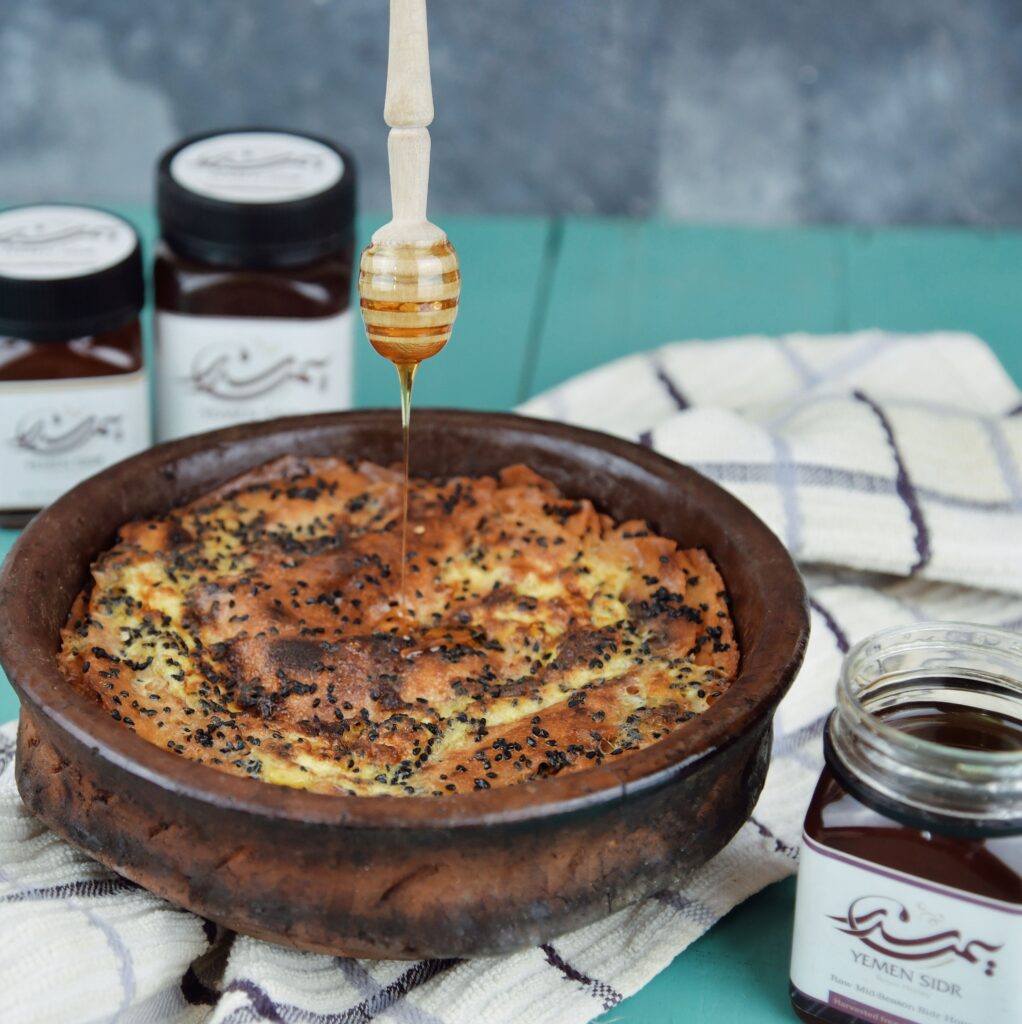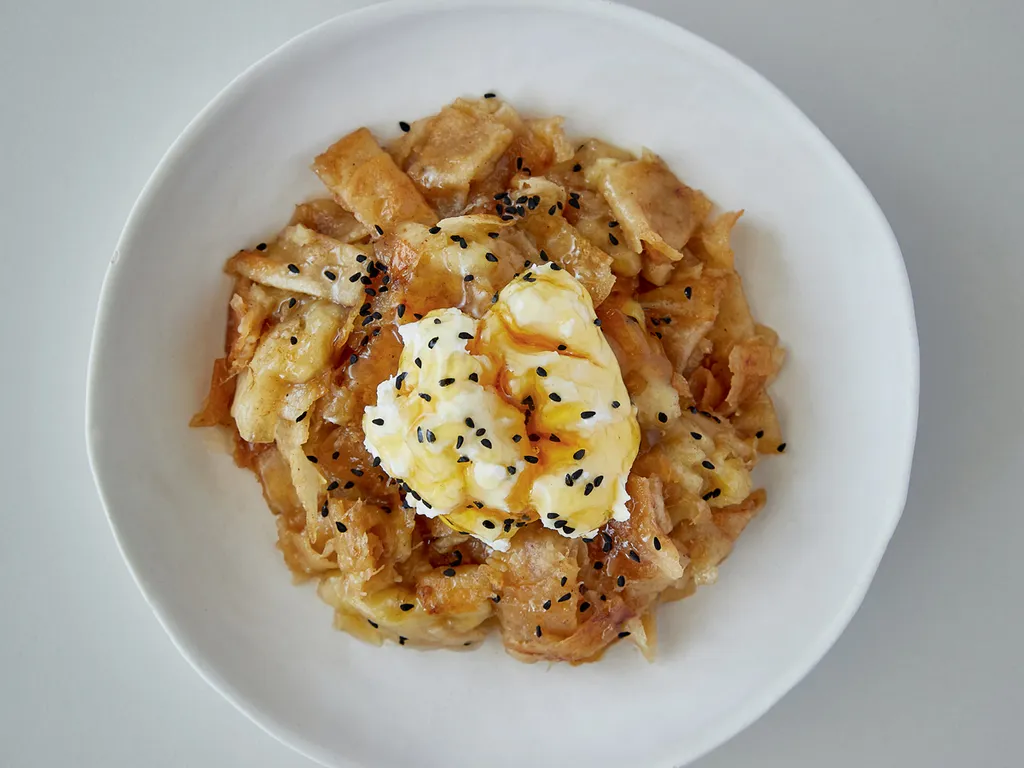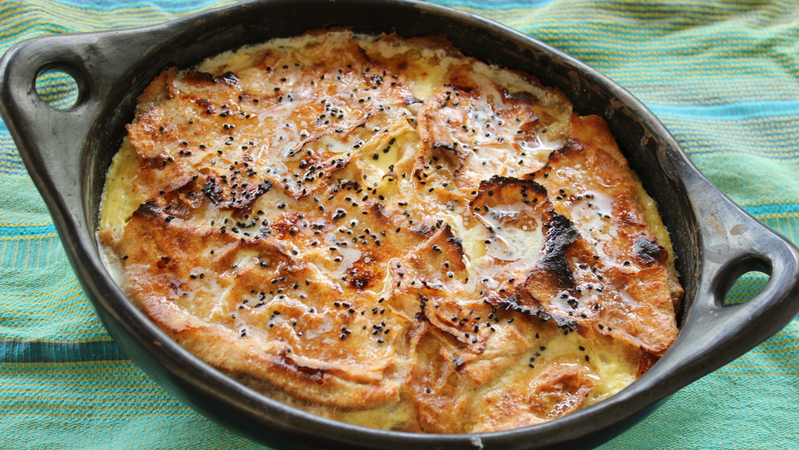How to Make Yemeni Fatta and Susi

By: Menal Elmaliki / Arab America Contributing Writer
Is it Fatta or Susi?
Fatta or susi, are one of the same recipes, but fatta refers to bread cut up and susi refers to bread that is layered which is similar to sabaya. Fatta is a famous Yemeni dish that is usually made for breakfast, lunch, or dinner. It adds a sweet element to a savory dinner, usually served to compliment the roasted lamb haneeth, fahsa and salta. Fatta translates to cut-up bread or pieces of bread. What makes fatta special is the simplicity and traditional aspect, in order to make it you break apart the pieces with your hand or to layer the bread and add the mixture between each layer.
The pieces of bread are caramelized with ghee (melted butter), eggs, honey and sprinkled on top nigella or black seeds on top, all combined together to create this delicious and unique flavor and texture. In different parts of Yemen, fatta is made differently, in Aden it is made with banana and in other parts it is made with dates. In Sanaa, it is made similarly to and often described as a French toast casserole, and in the south of Yemen, it is eaten with banana and honey.

History of the Dish
The history of the dish is unknown but it is believed to be a peasant dish that utilizes leftover bread. Fatta is easy to make because it is made with basic ingredients, using ingredients already found in your pantry or kitchen so a quick run to the grocer is not required. Bread, eggs, milk, and honey are the main and the only ingredients you’ll need. The bread is the main star, it’s recommended to use traditional-style Yemeni or Arabic bread and if not, pita bread is fine. The ingredients are baked in a traditional Yemeni soapstone pot, a casserole dish made of rock, and it is then baked in the oven. What comes out next is a buttery, caramelized inside with a crunchy top. The fatta or susi is then served warm with a drizzle of honey.
What is a soapstone?
If you don’t have a soapstone you can use a round baking dish or cooking dish, some examples include a cotta cazuela, porcelain dishes, a crème brûlée dish, or any type of baking dish with a high wall. A Yemeni soapstone is a great investment because it is versatile, natural, sustainable and can be used to make anything. Be sure to check out my article here for more information on Yemeni soapstone cooking ware.
Ingredients
- Sprinkle of black seeds/ nigella seeds
- Bread
- 1 Egg
- Ghee (clarified butter) you can make it on your own
- Milk
- Honey
- Round baking dish with a wall
Directions
- Preheat 400- 420 degrees F.
- Mix the eggs and milk in a bowl.
- Cut up the bread by hand and place it in the baking dish.
- Pour the milk and egg mixture into the dish. (You can layer it, make sure the bread is drenched in the mixture).
- Once finished, pour the ghee over the mixture and sprinkle it with nigella seeds.
- Bake the dish in the oven for 20- 30 minutes until the top is brown and crisp. If the top doesn’t brown place under the broiler for a couple of minutes. Be sure to keep an eye on it so it doesn’t burn.
- Finally, drizzle honey and serve warm.


Check out Arab America’s blog here!


